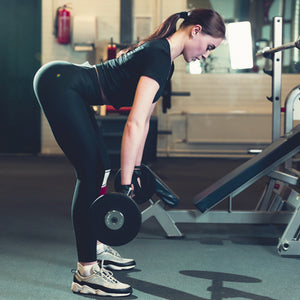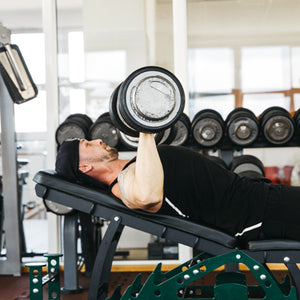
Does Knowing Your Heart Rate During a Workout Matter?
It's unlikely you're going to go up to your friends and tell them how you've hit 85% of your max heart rate for 12 minutes. If you do, they will probably look at you like you are crazy.
Sure, it's important THAT it is beating, but does how fast it beats during exercise matter?
Finding your resting heart rate isn't too hard — you could count your heartbeat for 60 seconds, or count for 15 and multiply it by 4. In order to get a good baseline on your resting heart rate, you should check it as you wake up for a few days.
Related - Determine Your Target Heart Rate
If you have some extra cash, I'd invite you to buy a fitness tracker — it will do all of the hard work for you. You can monitor your resting heart rate and also during training to see if there are any sudden spikes or if your heart rate doesn't elevate in response to exertion.
"A dramatically increased heart rate or a failure of my heart rate to increase on a normal progression can be warning signs and a reason to alter my training accordingly," mentions endurance athlete Dean Karnazes.
Finding Your Max Heart Rate
Before we jump into the different heart rate zones, it's important to know our max heart rate — this will determine your desired heart rate for each zone.
Back in the old days, you could calculate your max heart rate by taking 220 and subtracting your age.
With new research emerging, there's a new way to determine your max heart rate levels — you take 207 and subtract 0.7 times your age. This is the new theoretical maximum heart rate.
So if you are 28 years old, you would want to multiply 28 by 0.7, which equals 19.6. We can round this up to 20, and then subtract this from 207, giving you a theoretical max heart rate of 187.
This is your theoretical max heart rate.
If you want to truly determine your maximum heart rate, you need to have a VO2 Max test done. This is considered the gold standard for your aerobic capacity.
The new theoretical equation is pretty good, but if you want to get intense about the topic, find a local lab that has a VO2 tester.
Now that you know your theoretical max heart rate, you can figure out your heart rate ranges for each zone.
Heart Rate Zones
To make things a little easier, we'll go with our 28-year-old example of 187 as a maximum heart rate.
Zone 1
Percentage of Max Heart Rate - 50-60%
In zone one, this is considered a slow pace. It's great for overall health and recovery. You should be able to sustain this pace for a long time.
This should feel like you are walking from your couch to the fridge to get some snacks. Movement is key, so even if you need to move slowly, it still helps.
This is considered very, very light exercise.
In our example above, you would want your heart rate to be 93 to 112.
Zone 2
Percentage of Max Heart Rate - 60-70%
This zone is great for building endurance and burning fat. You are still exercising, but you aren't going all out.
This should feel like you're trying to catch up to that adorable dog you saw walking by so you could pet it. You can carry on a normal conversation in this zone and it feels more like a warm up or cool down pace.
In our example above, you would want your heart rate to be 112 to 131.
Zone 3
Percentage of Max Heart Rate - 70-80%
When we hit zone three, we are starting to work up a sweat and building more endurance during a moderately long exercise. You should be able to sustain this level of activity for 30 minutes if you had to. You're working in your aerobic capacity, so your body is using oxygen for cell energy.
You won't be able to sing, you can carry on a short conversation, and you'll probably get sweat in your eyes.
In our example above, you would want your heart rate to be 131 to 150.
Zone 4
Percentage of Max Heart Rate - 80-90%
In zone four, once you start to hit around 84% of your max heart rate, your body will start going into anaerobic metabolism. This is basically when your body is short on oxygen so it needs to check out other fuel sources to burn.
You only want to push this zone for 10 minutes at max. This is where you'll start to get the excess post-exercise oxygen consumption. It's kind of like writing a check your body can't cash... yet. Pushing your body a little bit more will cause your metabolism to remain elevated — continuing to burn up fat.
You're going to be dripping sweat and going all out doing something, but you keep going because it oddly feels good.
In our example above, you would want your heart rate to be 150 to 168.
Zone 5
Percentage of Max Heart Rate - 90-100%
Zone five is where you need to be careful — don't spend more than 2 minutes in this zone. In fact, most people reach their limit within 30 to 60 seconds.
This is all out work.
It takes a lot of dedication and masochism to enjoy this level. You're going to feel like dying while you go as hard as you can.
In our example above, you would want your heart rate to be 168 to 187.
Wrapping It Up
Finding your max heart rate and using these zones as a guide can help you make your training more useful.
If you're just getting started, you really don't need to go much above zone two or three. In fact, I would advise not attempting zone four or five unless you have a bit of time exercising under your belt.
Be safe, strive to improve, and learn your limits.






